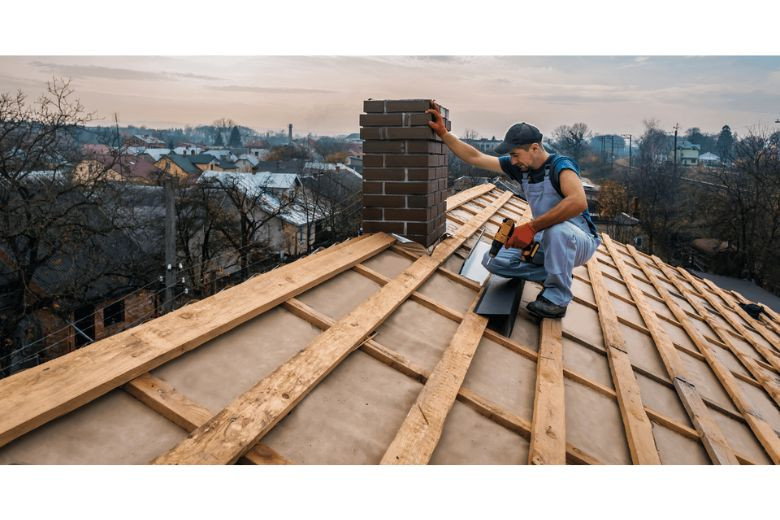The Role of Roof Decking in Structural Integrity
Posted on September 28, 2024 by Admin

Roof decking integrity in a roofing system is very huge. Decking of the roof refers to the sheathing that normally provides a nailing base for shingles or other materials. It forms a base upon which the rest of the roofing is laid. Knowing how roof decking contributes to the structural integrity will make a homeowner value it more and thus ensure that his own roof is safe and long-lasting. This article identifies some of the key benefits and functions of roof decking and explains why it is critical to keep your home structurally sound.
What is Roof Decking?
Roof decking refers to the material layer above the structural parts of the roof, such as rafters or trusses. It provides the base on which the roofing above is placed, be it with shingles, tiles, or metal panels. Plywood and oriented strand board are the most popular materials for decking; however, it is sometimes metal or concrete. The purpose of the roof decking is only for structure, providing a continuous, solid, and sound substrate upon which the roof covering material can bond and transmit loads to it.
Key Functions of Roof Decking
1. Structural Support
Probably the most important function that roof decking serves in structural integrity is to act as a support structure. It will transfer the load from the roofing materials equally to rafters and trusses, ensuring that the roof is able to bear the weight without sagging or collapsing. This becomes very important during heavy snowfalls, strong winds, and all such extreme weather conditions.
2. Base for Roofing Materials
It provides a flat and smooth surface for the application of roofing materials, which, if not properly applied, would be very hard to achieve an adequately secure and watertight finish. Its importance to the overall structural integrity also reduces the likelihood that shingles or other materials will shift and become damaged.
3. Moisture Infiltration
Proper roof decking prevents water infiltration. If the decking is properly laid down with underlayment and shingles, then water will not get through into the roof and hence into the house. It can prevent a number of leaks, mold, and structural damage issues from ever appearing in the first place, in case water gets in.
4. Resistance to Wind
The aspect of structural integrity played by the roof decking also stretches to improve the wind resistance. A strong decking layer increases anchorage of the roof covering, thereby reducing its tendency to be lifted or torn off by high winds. Added stability is important in areas more susceptible to hurricane-force winds or extremely strong storms.
5. Fire Resistance
Some roof decking materials including fire-rated plywood or treated OSB have an intrinsic nature of being more resistant to fire. This could be important where there is a high risk of wildfires.

Maintenance of Roof Decking
To keep on continuing a role that roof decking plays in maintaining structural integrity, it needs servicing and regular inspection. Here are some tips to help you properly take care of your roof decking:
1. Regular Inspections
Invite a professional to inspect your roof every few months for any damage, wear, or early signs that it would soon get damaged.
2. Fast Repair of Leaks
In case you notice some signs of leaks, act fast. Quick repairs will avoid the saturation of water in the roofing deck and underlying structure of your roofing.
3. Ventilation
Proper attic ventilation prevents the buildup of moisture and, therefore, the opportunities for the growth of mold and wood rot. Provide adequate ventilation over your attic to safeguard the deck below your roof.
4. Replace Damaged Decking
It is of great importance that you have your roof decking replaced when it is damaged. In the case of damaged decking, it may undermine the whole roof system and cause more serious structural issues.
Conclusion
That is probably the great role that roof decking plays in ensuring structural integrity. This way, it supports, stabilizes, and protects your entire roofing system. Once you realize the importance of this part of your roof, be assured that your roof will take care of you in all sorts of weather if you take care of it. This would include regular inspections, timely repair, and proper ventilation to make sure your roof remains strong, durable, and over y
Also Read :
The Benefits of Roof Inspections Before Buying a Home
How to Choose the Best Roofing Contractor
The Importance of Sump Pumps in Flood-Prone Areas
How to Install a Tankless Water Heater: Pros and Cons
The Benefits of a Home Plumbing Maintenance Plan
Roof Safety Tips for Homeowners
The Impact of Algae and Moss on Your Roof
How to Deal with Roof Leaks During a Storm
How to Create an Electrical Maintenance Plan for Your Home
Faqs
-
1. What is the purpose of having roof decking?
The key function or role that the roof decking plays towards the structural integrity is to act as a structural support: to hold materials for roofing and sustain loads from snowfall, strong winds, etc.
-
2. Which materials are usually used for the construction of roof decking?
The most common materials used for roof decking are plywood, oriented strand board, and metal or concrete in some cases. These materials give a strong and stable base for the roof covering.
-
3. How does the roof decking prevent moisture infiltration?
Properly installed roof decking, especially with underlayment and shingles, acts as a moisture barrier system. This helps to prevent water from entering the roof and eventually reaching the interior portion of the home to cause leakages or structural damages.
-
4. Why is regular inspection of roof decking important?
Such regular inspections could identify if the roof decking is showing any signs of damage or deterioration. Early detection of problems such as sagging, warping, or moisture damage permits repair on time and avoids further weakening of the roof structure's integrity.
-
5. How can proper ventilation affect roof decking?
Proper attic ventilation will prevent moisture buildup, thus minimizing the chance of mold growth and wood rot. Adequate ventilation protects the roof decking by maintaining a balanced environment, which is critical to the lifespan of every roofing system.
Recent Post
- Top Plumbing Service Providers in Arizona, USA
- Top 10 Electrician Service Providers in Alabama, USA
- Top 20 Roof Repair Service Providers in Alabama, USA
- The Role of Roof Insulation in Energy Efficiency: Tips and Tricks
- Understanding Roof Damage from Wildlife and How to Prevent It
- How to Choose the Best Roofing Contractor for Emergency Repairs
- Roofing Maintenance for Historic Homes: Preserving Architectural Integrity
- The Importance of Proper Attic Ventilation for Roof Health
- How to Identify and Prevent Roof Mold and Mildew
- The Best Practices for Removing Snow from Your Roof